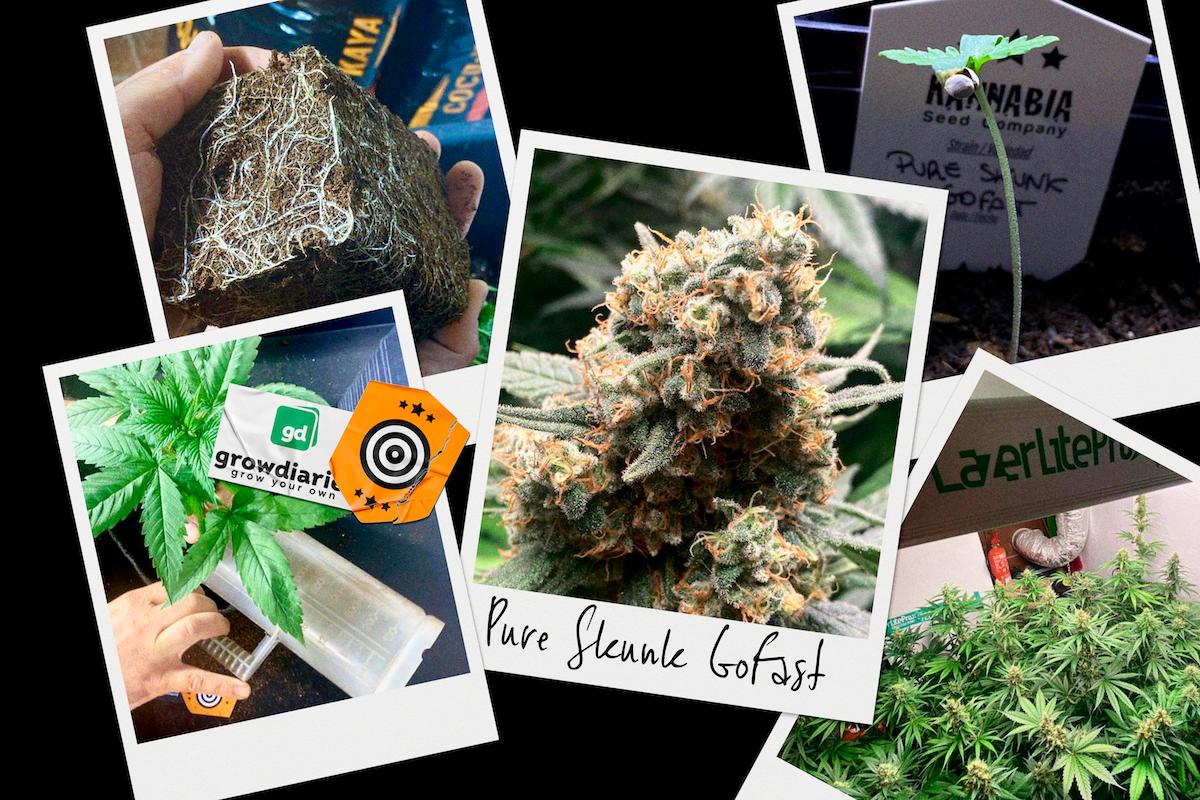PRO-MIX — Above and Beyond Growing Media
On the market, we can see a variety of growing media such as soil, peat moss, rockwool, and coir. These can be organic, living soil, with nutrients, beneficial microorganisms, etc. However, not every growing medium is suitable for growing cannabis, and not all cannabis requires the same type of growing medium.
In order to choose the optimum growing medium for your crop's needs, you need to have a good understanding of your crop's requirements. You should also have a good comprehension of growing media, from their components and their impact on the physical and chemical properties to the biological microorganisms that may be added or included in them.
Physical Properties of Growing Media

The physical properties are determined by the components of the growing medium such as peat, bark, coir, wood fiber, perlite, vermiculite, or rockwool. Each of these components is chosen on the basis of its physical properties, such as air porosity or reduced water-holding capacity, among others. Adding perlite to peat increases air porosity, the growing medium dries faster, and the water-holding capacity decreases.
- Coir: Coco coir is the term given to a range of natural products manufactured from coconut husks and used in horticultural applications. Coconut husks, coir pith (also known as coir dust), and coir chips (chunks) are primarily used for growing media, whereas coir fiber is generally not. Coir pith is usually combined with Sphagnum peat moss and aggregates to produce a variety of growing media for seed germination and general cultivation.
For example, PRO-MIX CX brings you a pH range of 5.5-7.0, EC: < 0.5 mmhos/cm
And a Water Holding Capacity of 50 - 70% (5.5 - 6.5 l/kg).
- Peat moss: Sphagnum peat moss is unique in that it simultaneously grows and dies, leaving behind what we call peat moss. Peat moss is the accumulation of dead organic material from partly decayed leaves, stems, and roots of various mosses and other plants that have accumulated in a water-saturated environment in the absence of oxygen.
Sphagnum peat moss primarily impacts the bulk density (weight of growing medium), water retention capacity (percentage of water volume retained after the saturated medium has drained), and air porosity (pore space occupied by air after the saturated medium has drained).
Most peat-based growing media contain 60 to 80% of pore space. The grade or particle size of the peat moss influences the amount of pore space in a soilless growing medium.
- Wood fiber: Wood fiber increases water-holding capacity and slightly increases air porosity. It does not function the same as perlite and, contrary to peat, surface color change does not indicate proper dry down.
- Rockwool is a combination of basalt rock and limestone. The mixture is heated to 1600˚C and spun at high velocities to produce fibers of 0.005 mm. Rockwool is offered in slabs or blocks. It is inert and sterile (pathogen and weed-free). Slabs are used to grow crops and blocks are used for germination purposes.
Chemical Properties of Growing Media

Among the chemical properties, we can find the pH and E.C. The pH of the growing medium may vary during use due to the alkalinity of the water or the potential acidity or basicity of the fertilizer.
The measures recommended for cannabis are:
- pH: 6. 2 (target range 5.8 -6.2)
- E.C: 1.2-1.6 during the vegetative stage and 1.6-2.4 during flowering.
Biologicals Microorganisms

Adding biological active ingredients, such as beneficial mycorrhizae and Bacillus, ensures a faster and more efficient use of water and nutrients which help plants reach optimal crop yield and quality.
Mycorrhizae connect with the plant roots to increase the total absorptive area, enhance the use of fertilizer and water for better quality, robust plants, and reduce environmental stresses.
The results on your crop are mostly revolving around better and faster growth. By inducing a global systemic reaction inside the plant, mycorrhizae will help reach its full genetic potential by stimulating its natural chemotype. For cannabis, it means increasing the synthesis of molecules such as terpenes and cannabinoids.
Not all mycorrhizal inoculants are equally effective, and one should choose wisely, especially when dealing with a fairly short crop like cannabis. You don’t have much space for mistakes or a second chance. It needs to work, and it needs to work quickly in order to see the full benefits. To be truly efficient, a mycorrhizal inoculant needs to be made of viable spores, applied close to the root system, and concentrated.
The bacillus enhances nutrient absorption, improves seed germination, and increases plant growth. Bacillus are gram-positive bacteria that colonize plant roots. Their high motility gives them the ability to form a biofilm around the root system that ensures protection against pathogens. Some of them, like Bacillus pumilus, secrete biostimulant molecules (auxins) that stimulate root growth and favor the absorption of nutrients and water. When combining mycorrhizae and Bacillus and applying them within the same growing media, the benefits are exponential:
- Accelerated seed germination & plant establishment
- Increased nutrient & water uptake
- Increased plant vigor and yield
- Increased plant tolerance to environmental stresses (drought, salinity, compaction)
As we can see, both microorganisms have major effects on plant quality and subsequently on yield. However, putting each organism alone will provide an individual beneficial effect on plants, while combining them will make them work harder to achieve greater results.
This article was created by PRO-MIX®.
Introduced in 1968, PRO-MIX® has always provided commercial growers and consumers with cutting-edge and value-added growing media products. PRO-MIX® growing media are enhanced with high-performance active ingredients and are considered a reference in the market, as they represent innovative and unique solutions. Fine-tuned for growers who seek efficiency, superior plant quality, disease suppression, and resistance to environmental stresses, PRO-MIX® optimizes results. Choose PRO-MIX® products with MYCORRHIZAE™, BIOFUNGICIDE™ / BIOSTIMULANT, or both to deliver outstanding plant quality and crop performance.
https://www.pthorticulture.com/en/crops/medicinal-plants/




